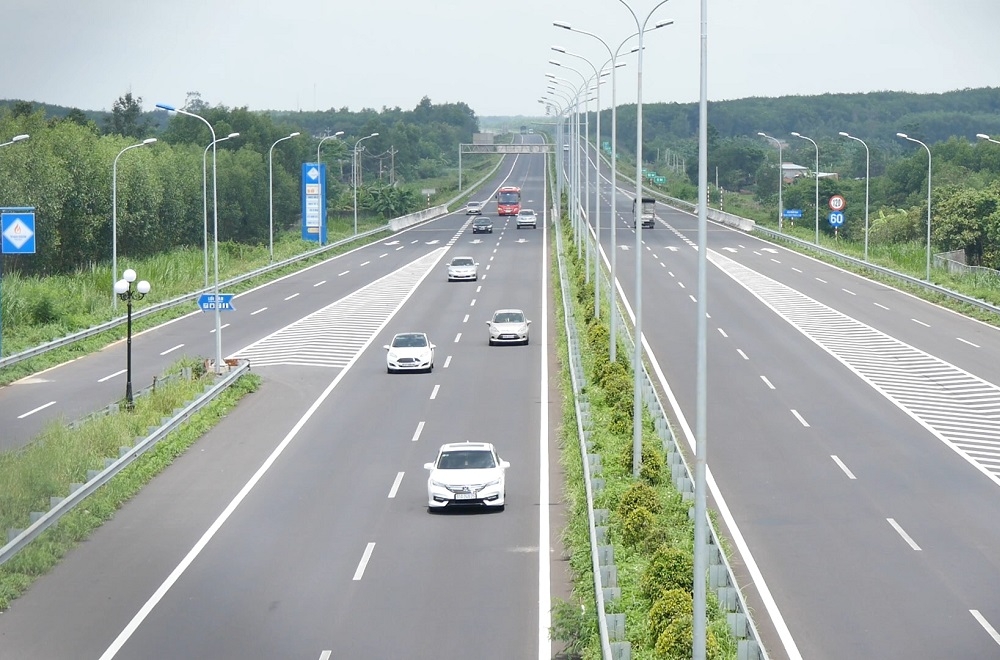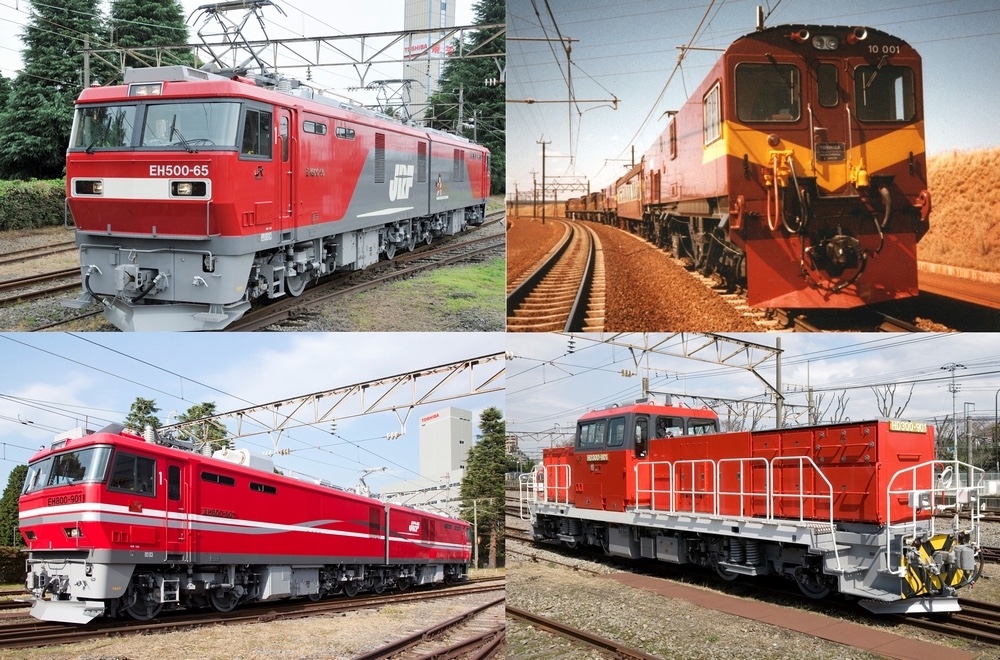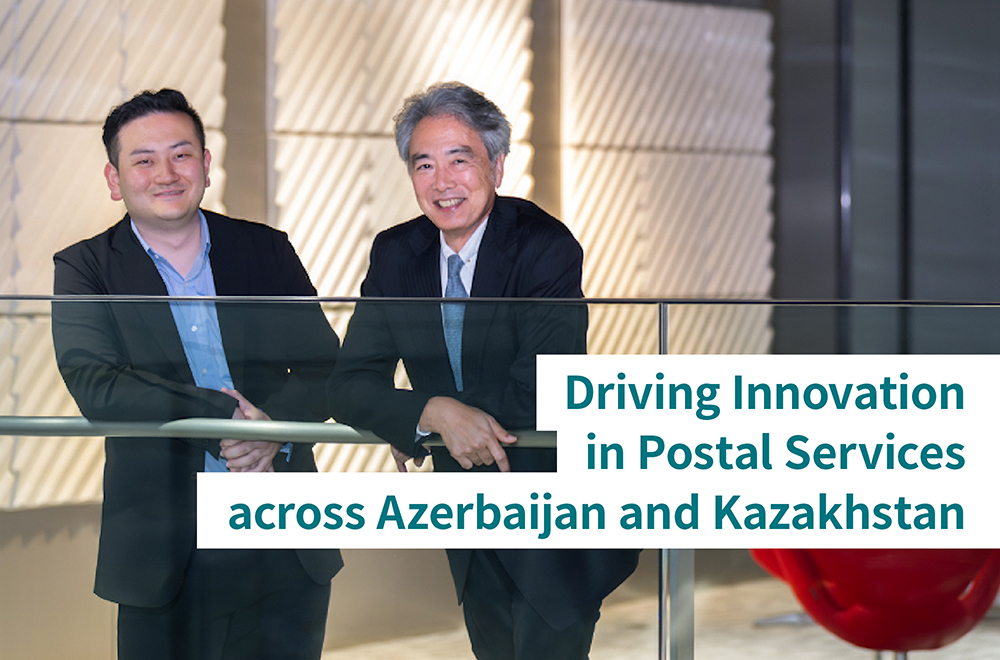Next Stop is the Green City of the Future EV Bus Demonstration Project in Malaysia
2018/04/11 Toshiba Clip Team
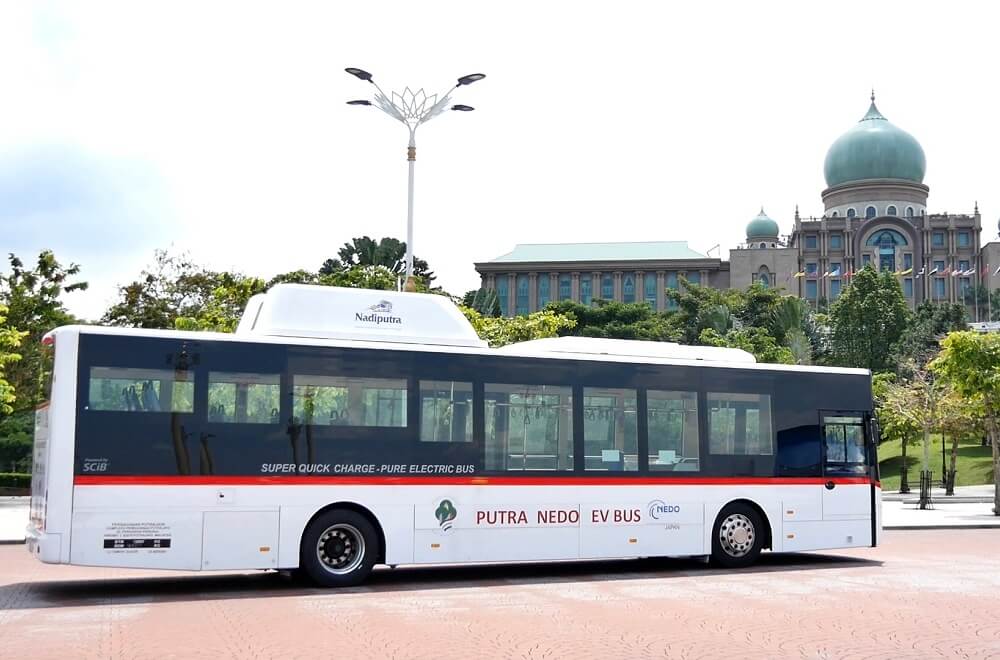
The summer of 2017 marked the beginning of a demonstration project for EV buses in Putrajaya, the administrative capital of Malaysia, as part of an overarching project for the city’s transformation into a green city. The key to this project is the SCiB™, Toshiba’s rechargeable battery (*1). These batteries allow for Super Quick Charge, freeing buses from spending hours of time at charging stations and keeping them on the road. EV buses are expected to become the transportation network for the cities of the future.
This demonstration project is based on an agreement between the city of Putrajaya and the New Energy and Industrial Technology Development Organization (NEDO), Japan’s national research and development agency, and has been jointly implemented by local companies and Japanese companies, subsidized by NEDO. Toshiba is responsible for the concept and overall project management, providing the rechargeable batteries and constructing the infrastructure for the EV bus operation, including charging stations and a cloud information system.
The fruits of this project will lead the way to the cleaner cities of the future.
Putrajaya, where the trailblazing Green City project is underway
Putrajaya, Malaysia’s administrative capital, is also known as the green city, strategically established under the “Putrajaya Green City 2025.” The initiative is led by Putrajaya Corporation, an agency established with the purpose of managing and administering the city of Putrajaya with the goal to create the city of the future.
We spoke to Datuk Seri Hasim Ismail, the President of Putrajaya Corporation, about his vision for “Putrajaya Green City 2025.”
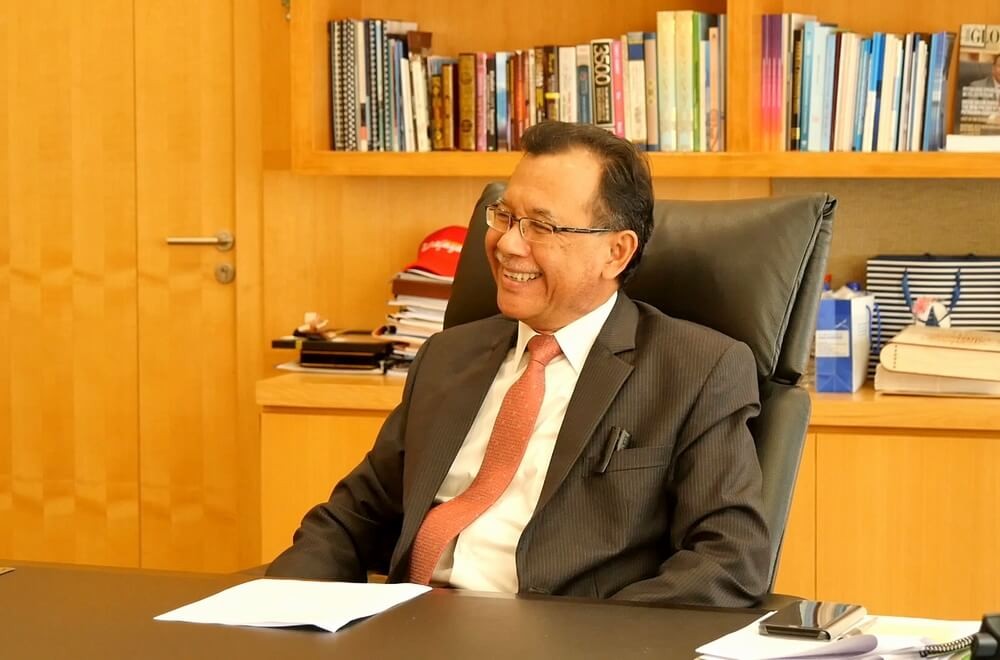
Datuk Seri Hasim Ismail, President of Putrajaya Corporation, discussing “Putrajaya Green City 2025”
“In 2010, the prime minister announced the development of Putrajaya and Cyberjaya as a pioneer township in green technology, as a showcase for development of other townships. Since that year, we embarked on various initiatives towards achieving that aim. For that purpose, we came up with Putrajaya Green City 2025. It is considered as the strategic plan for green initiatives for Putrajaya. As you can see, there are a lot of gardens in Putrajaya, and Putrajaya is actually in a garden. We are going forward by implementing a lot of green initiatives, especially low carbon initiatives.”
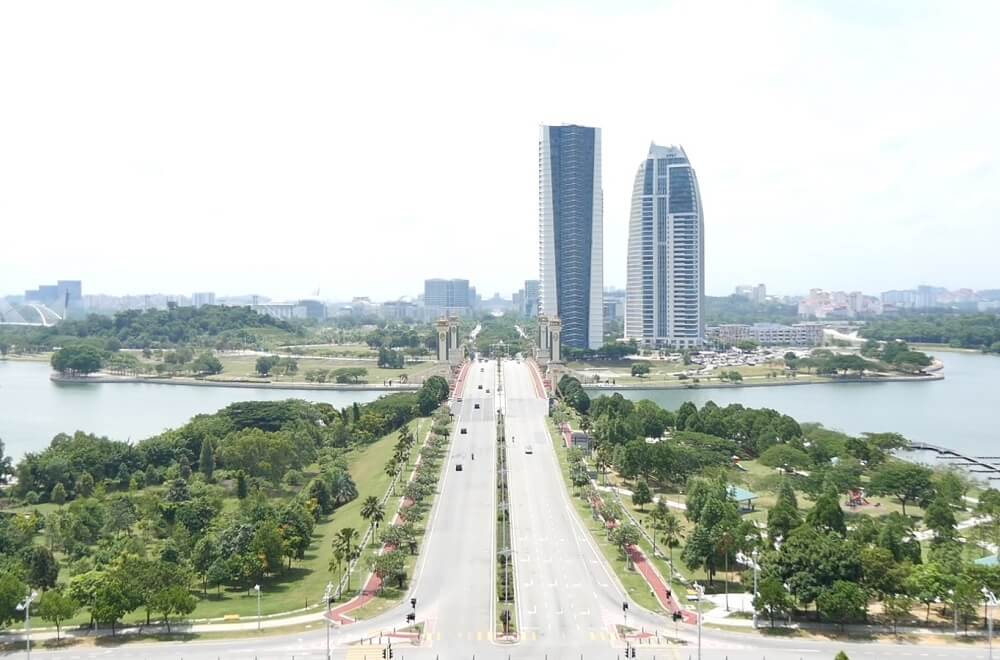
Putrajaya, the “Garden City”
Part of this urban development plan is to replace the buses in the city with EV buses—which is where this project, and Toshiba’s involvement in it, comes in. We spoke to Tadashi Takei of the Railway System Division at Toshiba Infrastructure Systems & Solutions Corporation.
“Putrajaya is a city that has stayed as close as possible to the green development model. It’s also home to many of Malaysia’s government agencies, which means policies are more easily reflected in urban development than in other cities. While nearby Kuala Lumpur struggles with heavy traffic and exhaust gas, much like every other Asian metropolis, Putrajaya is trying something new to bypass these issues. The buses in Putrajaya, the main form of public transportation, already ran on natural gas instead of diesel. I remember thinking when I visited the city for the first time that if we couldn’t get EV buses to run in this city, where everything seemed right, we probably couldn’t do it anywhere else. We believe that this particular combination of environmentally-conscious government and new EV buses will gather more attention, and that the project itself will become hugely influential in the future.”
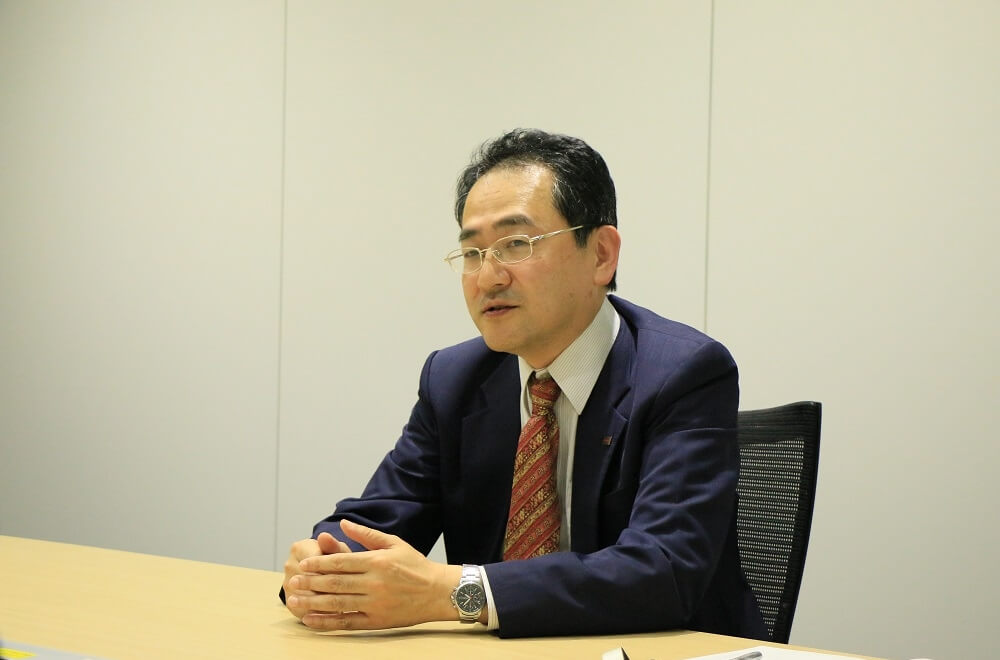
Tadashi Takei, Railway System Division, Toshiba Infrastructure Systems & Solutions Corporation
Electrification is not limited to buses, and vehicle electrification is expected to ramp up in the coming years. The expected lifespan of buses in Malaysia is about 10 years. The long life of SCiB™ assures no replacement during those years. This was another innovation that motivated the project.
“Unfortunately, many of the EV buses you see on the road are basically billboards on wheels. Because they take so long to charge and their battery lives are so short, the companies that operate these buses are reluctant to rely on them fully. What they’re asking for is an EV bus that can travel 200km a day, 70,000km a year, with batteries that have a life span of over 10 years. This is a much more demanding requirement than for EV cars, which are only expected to travel as much as 100,000km throughout their lifespans. We made the decision to work on this project because we were certain that, for the time being, our SCiB™ was the only rechargeable battery that could handle these demands.” Takei says.
EV Bus Solution: A Package of Technologies for Smooth Bus Operation
There is more to the SCiB™ than its long life-span. The batteries also charge in as short a time as ten minutes with the use of pantograph-style chargers, boosting the efficiency of bus operation, which has long been an issue for EV buses.
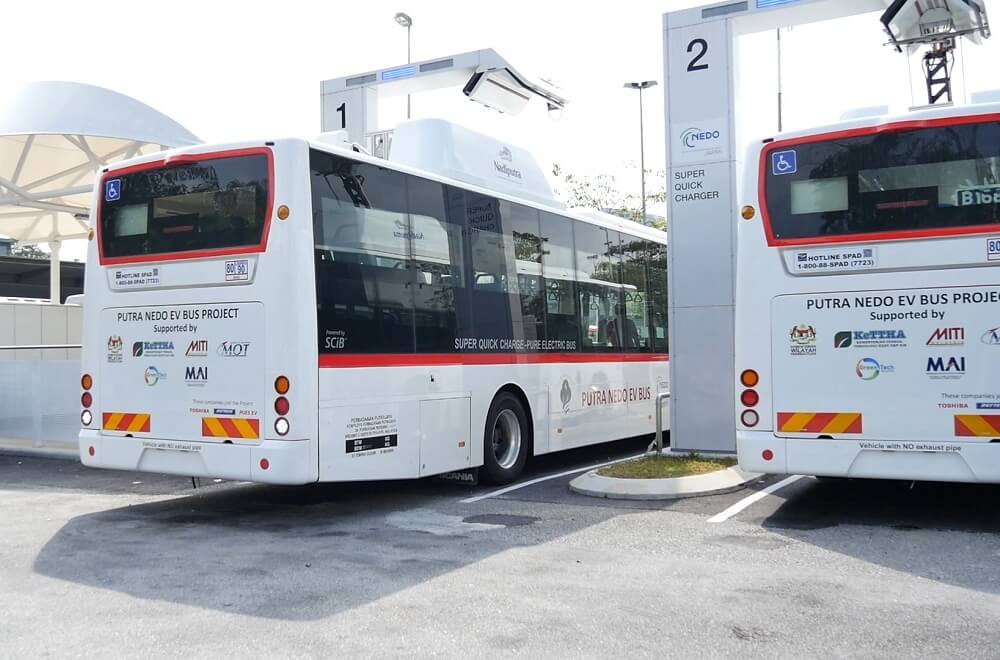
Pantograph-style chargers installed at bus terminals
The SCiB™ is not the only cutting-edge technology that Toshiba has thrown into the ring for the Putrajaya EV Bus Project. Toshiba’s cloud information system constantly monitors battery temperature, charging voltage, and the electric current, and stores the data in the cloud. The system supports remote monitoring, and ensures that operators can respond quickly to malfunctions as they happen. This is, of course, immensely helpful to the operators who maintain the buses.
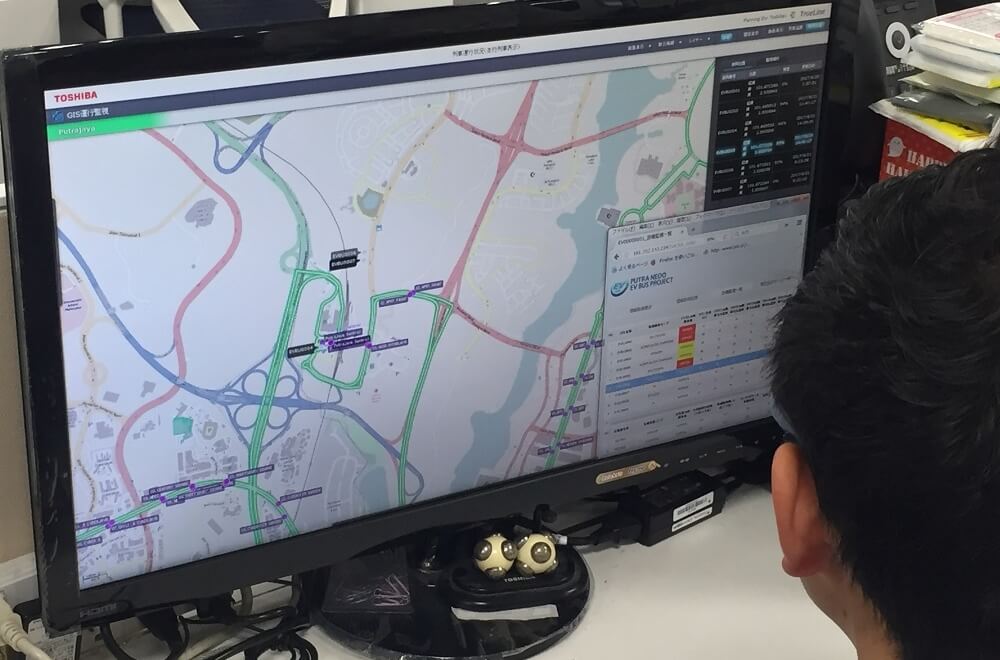
Cloud information system facilitating remote monitoring of EV buses
Even Takei, who has been involved in EV Bus Solutions since its inception, and has more than six years of experience with the technologies, says he encountered some difficulties in this project.
“It’s important that we are able to use these technologies for business.” Takei says. “Toshiba does not manufacture buses, so working with bus manufacturers is obviously very important. To decrease and diffuse operating risks, the manufacturing work and system testing were conducted through horizontal specialization in four countries, with participating companies dividing up the work and executing them within the confines of existing businesses. It was a tremendous amount of work to do all of this within the budget and within the time frame, as there were obstacles every which way—changes of the main components, getting local permits and licenses. But now that we’ve made it to regular operation, we can feel the dynamic has shifted. Whereas before we were always the ones requesting things of our counterparts, now they’re the ones coming to us. Achieving something, even if it’s small, could open the door for new opportunities we couldn’t have imagined before. It’s important, of course, to execute a project as planned, but it’s equally important to have the flexibility to pick up and develop new opportunities as they arise.”
We asked Haji Rahim, former CEO of Pengangkutan Awam Travel & Tours, the city bus operator brought on to work with NEDO and the Japanese consortium of companies, what he thinks of this project.
“Since the beginning, we have operated with buses using gas instead of diesel. So, when we had a chance to meet with our counterparts from Japan and they offered us to support us in introducing EV buses, we welcomed the offer. Residents of the city also have welcome the buses with open arms. They seem to be happy with the arrival of the EV buses and some of them comment that “the engine” is really quiet, some even say, “Are we in the bus?”, actually there isn’t engine anymore, there are electric motors. We are in the midst of educating the public on using electric vehicles and using the EV bus as public transportation. We still need to educate drivers of the buses, changing their mindset so that they are aware of driving EV buses. We have to work more on the maintenance of buses and make sure that the availability of the bus is better.”
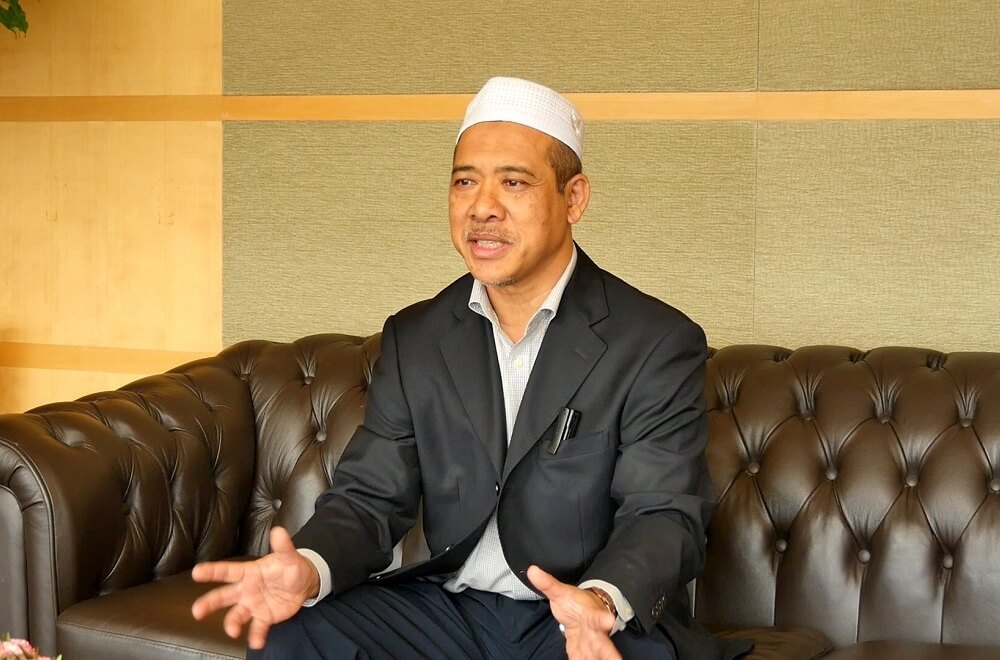
Haji Rahim, former CEO of Pengangkutan Awam Putrajaya Travel & Tours
Putrajaya Corporation’s President, Datuk Seri Hasim has also great expectations for the EV Bus Project.
“I think we are the first in ASEAN region to start the demonstration of EV buses with super quick charge technology. EV bus is one of the main initiatives that we try to introduce in Putrajaya. Putrajaya Green City 2025 has set an ambitious target to reduce Putrajaya’s city-wide greenhouse gas emissions by 60%, from its estimated 2025 business-as-usual level. Working with the Japanese consortium has been good experience to our achieving this target.”
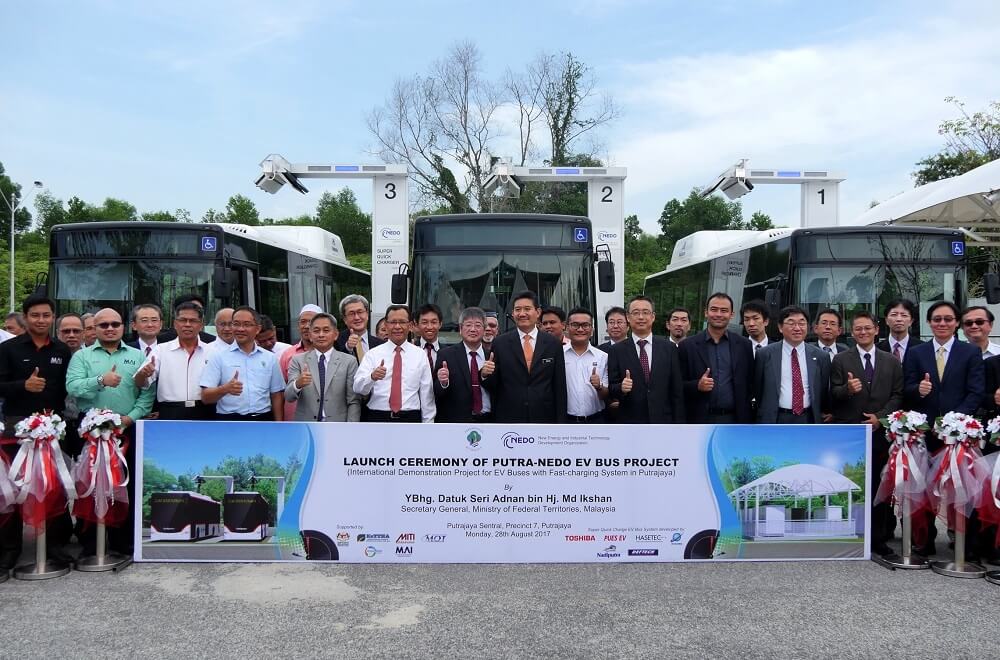
Launch Ceremony for the EV Bus Project
The NEDO project will continue until 2020 and after that the buses are expected to continue to run until 2023. But the data and knowledge gleaned from it will be sure to bear fruit for many years, throughout the world.
Takei’s vision is set for the future of zero-emission transportation, “Today, the idea that we should not throw trash on the street has become ingrained into our consciousness, but not very many people seem to care as of yet about the emissions we release into the atmosphere. Of course, the ultimate goal is to be able to set regulations for a zero-emission society, with no emission of greenhouse gasses and exhaust gas. But this is impossible, realistically speaking, unless it’s balanced with the right environmental technologies. With the right environmental technologies, we can establish the necessary regulations, and the industrial sector will adapt in turn. As of now, environmental technologies just haven’t reached that level of practicality. But let’s say the technology comes in and makes zero-emission an actual possibility—then we can regulate. That’s the kind of turning point that we’re trying to create.”
In the not-so-faraway future, we may see new technologies challenge driving a movement for zero-emission societies. How will our cities change, and our lives in them? We can’t wait to find out.
※*1: Rechargeable battery
Battery that can be charged and re-charged many times over its lifespan.
![]()





